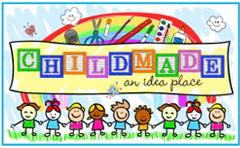Last winter we experimented with cardboard tubes in an effort to better understand the forces of compression and tension in construction. We found that by simply draping a length of toilet paper, from a fresh roll, across the tops of the bottom layer of a cardboard tube pyramid, we could build the pyramid much higher than if we built it with nothing between the tubes.
We attributed this to tension provided by the paper (much like a girder in a building) providing horizontal force to counteract the downward force of the compression from the tubes.
This morning, we received a comment suggesting that friction between the paper and the tubes was also at play. I mentioned that to the children at breakfast, and they agreed we needed to experiment further - this time with friction and tension in mind.
First we rebuilt a tower, just high enough to get it to collapse.
Then, tried again on the carpeting, thinking that the carpet would provide more friction than the table, right off the bat, and might be enough to hold the pyramid in place. But, the pyramid collapsed just as it had on the table.
I asked the children if there might be a way to reduce the friction between our "girder" and the tubes, so we could see if the tension still held. They suggested draping a strip of slippery, wax paper across the tubes, in place of the toilet paper.
It worked perfectly. There was a completely different feel to the tower as it rose. The wax paper held everything sturdily in place just as the toilet paper had in our previous experiments.
Not quite ready to give up on the friction concept though, we wrapped the bottom tubes in toilet paper, and tried rebuilding the pyramid.
It collapsed just as when built with unwrapped tubes. A(age14) was able to get it to stand briefly, by adding side supports (upright tubes) and stacking the tubes very gently.
Her tower even continued to stand for a few seconds after she removed the side supports. But then, gradually, the gaps between the tubes widened until the whole thing collapsed.
The tower with the wax paper continued to stand until we finally dismantled it to clean up for lunch, leaving us with similar conclusions to last year - the compression force of the tubes pushing down either side of each tube in the bottom layer, creates a counteracting, horizontal pull on the paper, that keeps the next layer of tubes from pushing on down into the gaps between the bottom tubes.














10 comments:
What a great idea! I love it. I'll have to save it to my "curriculum" for the future.
I think you have this pretty well covered. Who knew you could learn so much physics from toilet paper rolls? Very cool sides of experiments!
I'm saving up our toilet paper rolls for this!
We experimented these same concepts, not with toilet paper rolls but Janga blocks, using all sorts of different mediums to build them on, rice for Sandy rocks, to very loose sand.
Hmmm....interesting. I had to go back and re-read your previous post too because I believe that there's got to be some friction at work too. Funny thing is we were just talking about friction a couple of days ago because Rose had a blister from playing guitar and she wanted to understand the "why?" of blisters. . .It would be interesting to experiment with different mediums to add stability in the place of the wax paper/toilet paper and see if that's just a surface area thing or what effect those stabilizers have.
Hmmmm, I like Raventhreads comment about trying different textures. Wax paper to me seems slippery, so I find it amusing it didn't slip away.
This is very interesting! I think compression in this case definitely outweighs friction. I should ask Smarty and her friend to brainstorm on this during the next playdate.
I can't add anything to the conversation, because I don't have a clue! And this is why I don't think unschooling completely would work for us. I am simply not intelligent enough!
Great! I think i will try this with my science class!
Well i did this with my science class and i have to say that your kids are better problem solvers than most of my students! you must be doing something right!
Post a Comment